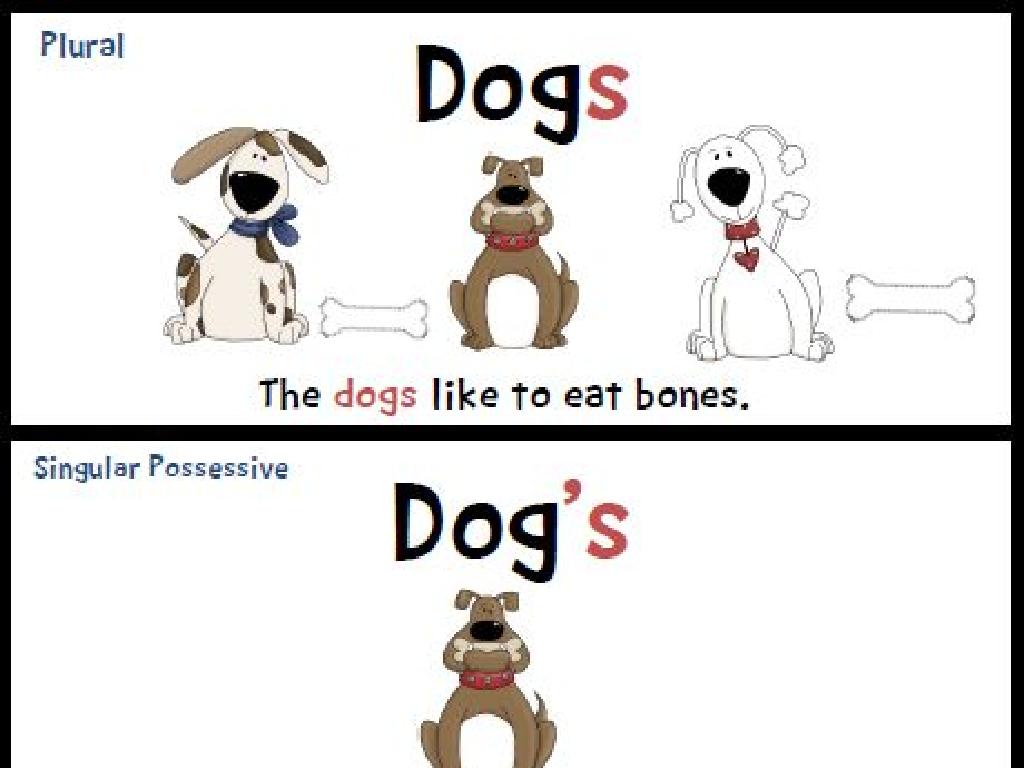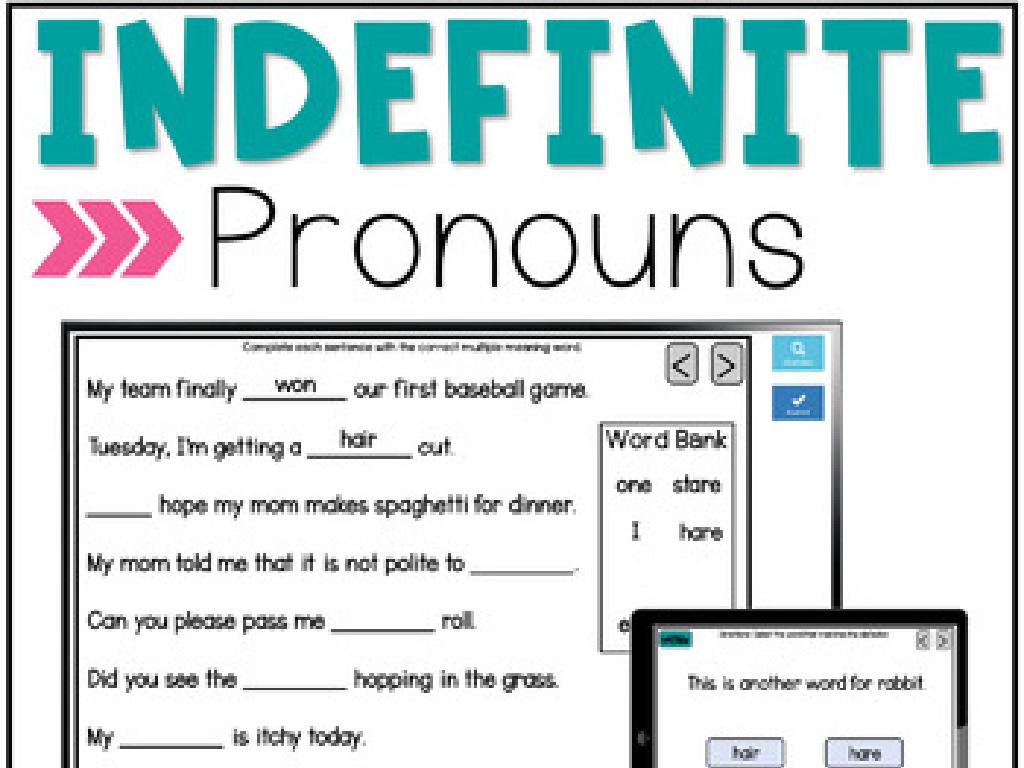Understand Fractions As Division: Word Problems
Subject: Math
Grade: Sixth grade
Topic: Fractions And Decimals
Please LOG IN to download the presentation. Access is available to registered users only.
View More Content
Understanding Fractions as Division
– Fractions represent division
– A fraction like 1/2 means 1 divided by 2
– Converting fractions to decimals
– To find the decimal, divide the numerator by the denominator
– Real-world fraction applications
– Fractions are used in cooking, time management, and budgeting
– Practice with word problems
|
This slide introduces the concept that fractions are another way of representing division. Start by explaining that the top number (numerator) is divided by the bottom number (denominator). Show how to convert fractions into decimals by performing the division. Discuss how fractions apply to everyday life, such as in recipes (half a cup of sugar), dividing time (quarter of an hour), or splitting a budget. Conclude with word problems to apply these concepts, ensuring to provide examples that are relatable and age-appropriate for sixth graders. Encourage students to think of other areas where they encounter fractions.
Understanding Fractions as Division
– A fraction shows part of a whole
– Numerator over denominator
– Top number divided by bottom number
– Example: 1/2 as a fraction
– 1/2 means 1 out of 2 equal parts
– Fractions in word problems
– Use fractions to solve real-life problems
|
This slide introduces the concept of fractions to sixth-grade students, emphasizing their role in representing parts of a whole. The numerator (top number) and denominator (bottom number) are explained, with 1/2 provided as a concrete example. Students should understand that the numerator signifies how many parts we have, while the denominator indicates the total number of equal parts the whole is divided into. In word problems, fractions are used to depict scenarios like sharing, measuring, and comparing. Encourage students to think of fractions as division problems, where the numerator is divided by the denominator. Provide additional examples to solidify their understanding and prepare them for applying this knowledge to solve real-life problems.
Fractions as Division
– Every fraction is a division
– Numerator divided by denominator
– Example: 3/4 means 3 ÷ 4
– If you have 3 pizzas split into 4 equal parts, each part is 3/4
– Understanding fractions through division
– Grasping this concept helps solve word problems involving fractions
|
This slide introduces the concept that every fraction represents a division problem, where the numerator (top number) is divided by the denominator (bottom number). Use the example of 3/4 to illustrate this point by explaining that it means 3 divided by 4. To make this concept relatable, you can use a real-life example such as dividing 3 pizzas equally among 4 people. Each person would get 3/4 of a pizza. Emphasize that understanding fractions as division is a key skill for solving word problems that involve fractions. Encourage students to think of fractions in terms of division to simplify complex problems. This foundational understanding will be crucial as they progress in math.
Understanding Fractions as Division
– Real-world application of fractions
– Fractions represent parts of a whole in daily life, like slicing a pizza.
– Comprehending the story in problems
– Grasping the context is crucial for finding the solution.
– Solving examples as a class
– We’ll work through problems together to learn the process.
– Practice with guided examples
|
This slide introduces the concept of understanding fractions as division through word problems. Emphasize the importance of applying mathematical concepts to real-life situations, which helps students see the relevance of what they’re learning. Encourage students to carefully read and understand the story presented in the word problems, as this is often the key to determining the correct approach to a solution. Work through examples as a class to demonstrate the process of translating a word problem into a mathematical fraction division problem. Provide guided practice with additional examples to reinforce the concept.
Solving Fraction Word Problems
– Carefully read the problem
– Find the ‘whole’ and the ‘part’
– ‘Whole’ is what we consider 100% or total, ‘part’ is a portion of the whole.
– Write the fraction as division
– If 3 out of 4 slices of pizza are eaten, write 3 ÷ 4 to represent the fraction.
– Solve the division for the answer
– Dividing 3 by 4 gives us 0.75, which is the fraction of the pizza that was eaten.
|
This slide is aimed at guiding students through the process of solving word problems that involve fractions. Start by emphasizing the importance of reading the problem thoroughly to understand what is being asked. Next, help students identify the ‘whole’ (the total or complete amount) and the ‘part’ (a portion of the whole). Then, demonstrate how to translate the fraction into a division statement, explaining that the numerator is divided by the denominator. Finally, walk through solving the division to find the answer. Encourage students to practice with different word problems and to check their understanding by explaining the steps back to you or a peer.
Fraction Division in Word Problems
– Emma’s pizza sharing problem
– Emma has 8 slices for 3 people, including herself.
– Write as a fraction: 8 ÷ 3
– Represent the problem with fractions.
– Solve the division: 8/3 slices
– Divide 8 slices by 3 people to find the amount per person.
– Each person gets 2 2/3 slices
– Convert the improper fraction to a mixed number.
|
This slide introduces students to the concept of fractions as division through a relatable word problem. Emma has 8 slices of pizza to share with her 2 friends, which includes herself as the third person. Students should write the problem as a fraction, 8 slices divided by 3 people, and solve the division to find out how many slices each person gets. The solution, 8/3, is an improper fraction, which they will then convert to a mixed number, resulting in 2 whole slices and 2/3 of a slice per person. This exercise helps students understand how to divide quantities into equal parts and express the result as a fraction or mixed number.
Fraction Division in Word Problems
– Problem: Dividing a rope into halves
– Write the fraction: 6 ÷ 1/2
– Express the problem as 6 meters divided by 1/2 meter
– Solve the division: 12 pieces
– Use division to find the number of 1/2 meter pieces in 6 meters
– Understanding division as splitting
– Grasp that division can mean splitting into smaller sections
|
This slide presents a practical word problem to help students understand the concept of fractions as division. The problem involves dividing a 6-meter rope into pieces that are each 1/2 meter long. By writing the division as a fraction, students can see the direct relationship between division and fractions. Solving this gives us 12 pieces, demonstrating that dividing by a fraction is the same as determining how many of those fractional parts fit into the whole. This example reinforces the concept that division can be thought of as splitting a whole into equal parts. Encourage students to visualize the rope being cut into smaller pieces to better understand the division process.
Class Activity: Fraction Scavenger Hunt
– Find divisible classroom items
– Pair up for word problem creation
– Use found items to write problems involving fractions as division
– Solve peer-created problems
– Exchange problems with a partner and find solutions
– Review answers collectively
– Discuss solutions and methods used in the class
|
This interactive class activity is designed to help students understand fractions as division in a fun and engaging way. Students will search the classroom for items that can be evenly divided into parts, such as a set of markers or a book with multiple chapters. Working in pairs, they will then create word problems that involve dividing these items into fractions, helping them to visualize and apply the concept of fractions as division. Afterward, they will exchange problems with their peers and work on finding solutions. This peer-to-peer learning strategy not only reinforces their understanding but also improves their problem-solving skills. Conclude the activity with a class discussion to review the answers, ensuring that students can explain the process they used to arrive at their solutions. Provide guidance and clarification as needed. This activity caters to different learning styles and promotes collaboration among students.
Wrapping Up: Fractions as Division
– Recap: Fractions represent division
– Practice is key to mastery
– Solving word problems enhances understanding
– Homework: 5 word problems
– Apply today’s lesson to solve
– Share solutions next class
– Be prepared to discuss methods and answers
|
As we conclude today’s lesson, remind students that fractions are another way of representing division. Emphasize the importance of practice in mastering the concept, especially through word problems that apply real-world scenarios. For homework, students are to complete five additional word problems that involve fractions as division, which will reinforce their learning. Encourage them to try different strategies for solving the problems and to be ready to share their solutions and thought processes in the next class. This will not only help them understand the concept better but also build their confidence in tackling similar problems.






